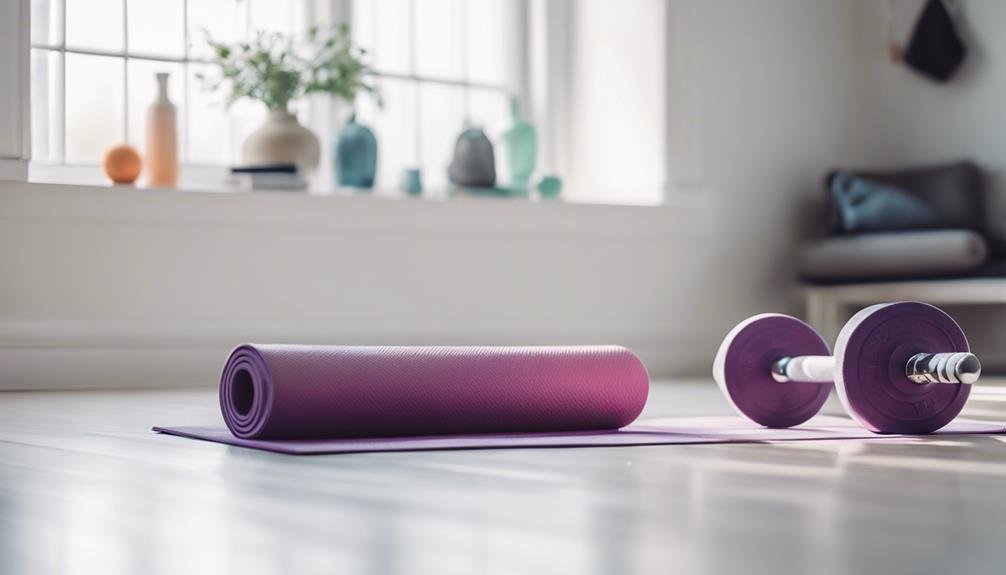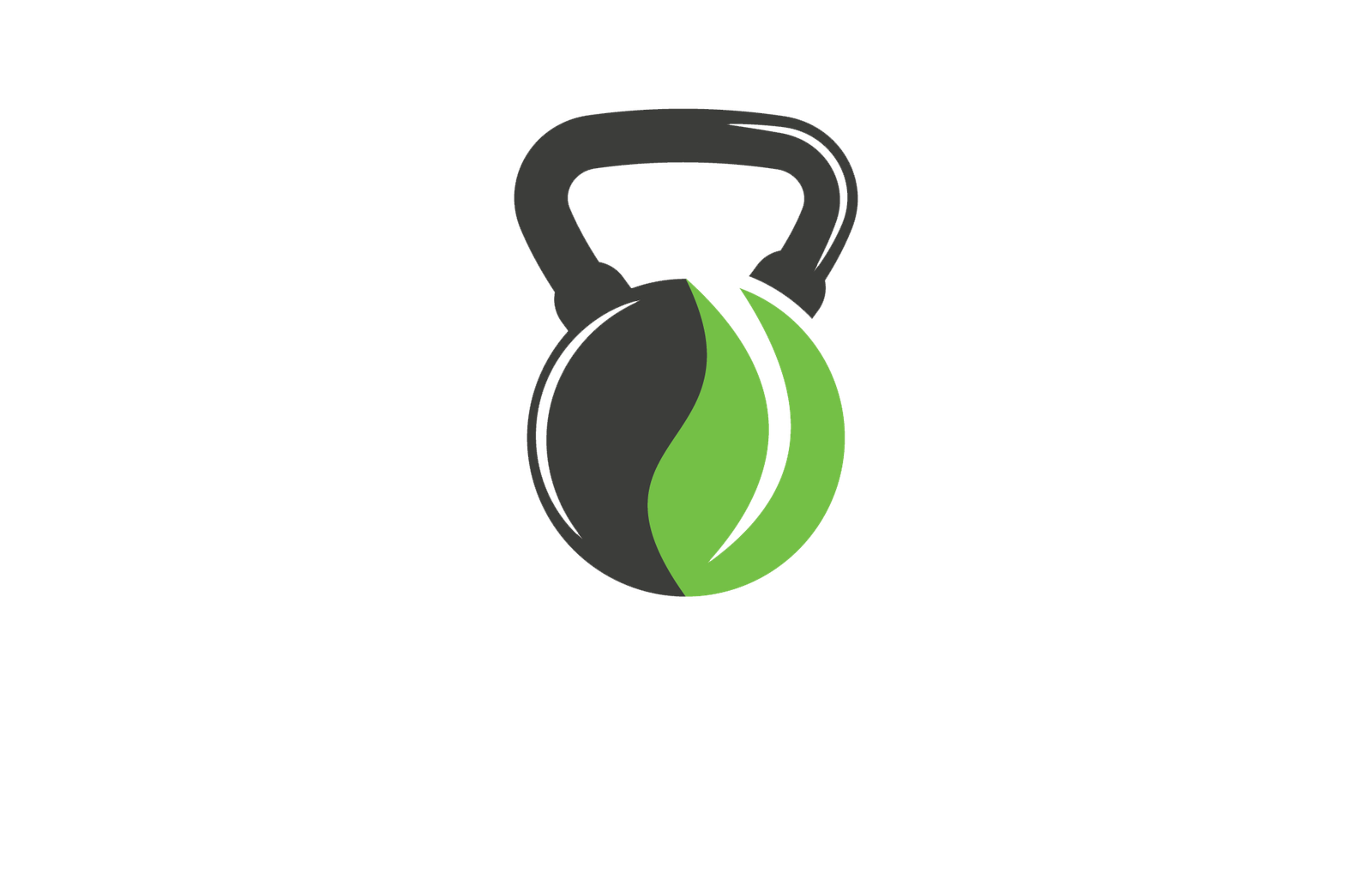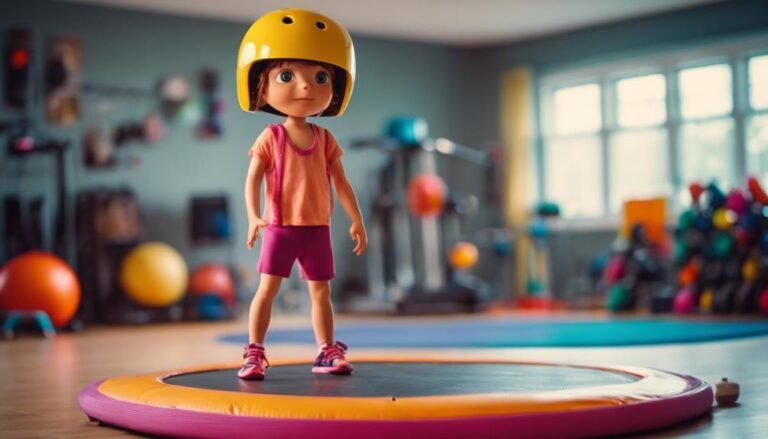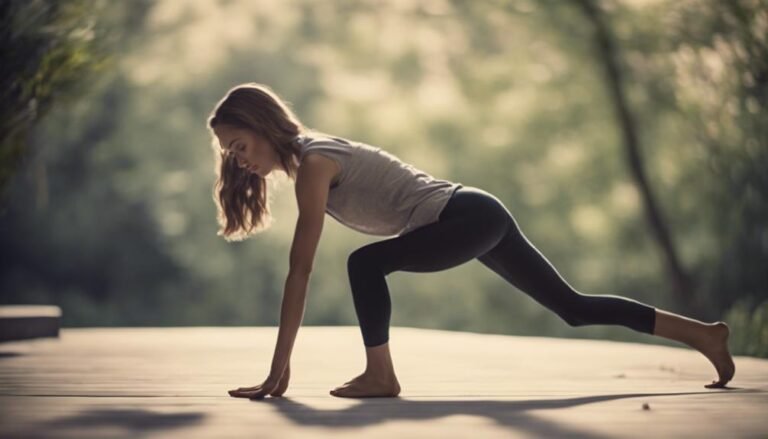Don't miss our holiday offer - 20% OFF!

Beginner-Friendly HIIT Workouts for Home
Crush your fitness goals with our beginner-friendly HIIT workouts designed for home, and discover a flexible routine that adapts to your lifestyle.
We're about to take our fitness journey to the next level with beginner-friendly HIIT workouts we can do from the comfort of our own homes. By adopting the right mindset and setting clear workout goals, we can tailor our HIIT routine to meet our specific needs and track our progress. With the flexibility to create a schedule that suits our lifestyle, we can get started with essential exercises like squats, push-ups, and lunges, and incorporate warm-up and cool-down routines that work for us. As we get moving, we'll discover how to modify exercises to fit our fitness level and stay motivated to reach our goals.
Key Takeaways
- Adopt a beginner-friendly mindset, committing to regular workouts and setting clear goals, such as weight loss or endurance improvement.
- Start with short, 15-minute HIIT sessions, 2-3 times a week, and gradually increase duration and frequency as fitness level improves.
- Focus on essential exercises like squats, push-ups, lunges, and planks, which can be modified to suit individual fitness levels and goals.
- Warm up with 5-minute routines, including leg swings, arm circles, and high knees, to prepare the body for intense exercise.
- Use home workout advantages, such as space efficiency and flexibility, to create a consistent and effective HIIT routine that yields real results.
Getting Started With HIIT
Let's plunge into the world of HIIT by defining what it is and how it can transform our fitness journey, starting with the basics that will get us moving towards a leaner, stronger, and healthier us. HIIT, or High-Intensity Interval Training, is a workout strategy that involves short bursts of intense exercise followed by brief periods of rest. This approach has revolutionized the way we approach fitness, allowing us to achieve remarkable results in minimal time.
To get started with HIIT, we need to adopt the right mindset. We must be willing to push ourselves beyond our comfort zones and commit to regular workouts. Setting clear workout goals is essential, whether it's to lose weight, build muscle, or increase endurance. By defining our objectives, we can tailor our HIIT workouts to meet our specific needs and track our progress. With a focused HIIT mindset, we'll be motivated to tackle each session with enthusiasm and energy. As we venture into this fitness journey, let's remember that consistency and perseverance are key. By staying committed, we'll be amazed at the transformative power of HIIT.
Benefits of Home Workouts
Embracing the convenience of home workouts allows us to eliminate excuses, saving time and energy that would be spent commuting to the gym, and instead, channeling that motivation into a more focused and effective HIIT routine. By working out from home, we gain personal freedom to create a schedule that suits our lifestyle, allowing us to fit in a quick HIIT session even on the busiest of days. We're no longer bound by gym hours or crowded classes, giving us the flexibility to work out whenever and wherever we want.
Another significant advantage of home workouts is space efficiency. We don't need a large, dedicated gym space to get a great workout. With HIIT, we can utilize even the smallest of spaces, making it perfect for those living in apartments, condos, or homes with limited room. This means we can get a great workout in the comfort of our own home, without having to worry about finding space or dealing with crowded gym floors. With home workouts, we're in control, and that's incredibly empowering. By taking advantage of these benefits, we can create a consistent, effective, and motivating workout routine that yields real results.
Essential Exercises for Beginners
As we start our HIIT journey at home, we're excited to focus on the essential exercises that will get us moving, boost our cardio fitness, and build strength. We'll begin with the basics that will get our hearts racing and muscles working, because a strong foundation is key to achieving our fitness goals. Let's get started with the exercises that will take our fitness to the next level!
Get Moving Basics
We start with the basics, mastering foundational exercises that build the strength, endurance, and agility we need to tackle more intense HIIT workouts later on. As beginners, we focus on exercises that work multiple muscle groups at once, saving time and maximizing our fitness goals.
To get moving, we'll start with these essential exercises:
- Squats: building strength in our legs and glutes
- Push-ups: developing upper body strength and endurance
- Lunges: targeting our legs, glutes, and core
- Planks: strengthening our core and improving posture
- Jumping jacks: getting our hearts rate up and burning calories
These exercises are the building blocks of our fitness journey, and we'll return to them again and again as we progress to more intense workouts. With our workout playlist pumping us up, we're motivated to push ourselves and reach new heights. By mastering these basics, we'll be ready to take on more challenging HIIT workouts and crush our fitness goals.
Boost Cardio Fitness
By incorporating exercises that get our hearts racing and sweat dripping, we can substantially boost our cardiovascular fitness and set ourselves up for success in more intense HIIT workouts to come. As beginners, we must focus on exercises that raise our heart rates and keep them elevated for a sustained period. This is where Cardio Blast comes in – a high-intensity interval workout that pushes our cardiovascular system to its limits. We'll be doing exercises like burpees, jump squats, and mountain climbers that get our hearts pounding and our lungs burning. To take it up a notch, we'll incorporate Fitness Frenzy, a series of rapid-fire exercises that challenge our endurance and agility. With each workout, we'll be one step closer to achieving peak cardiovascular fitness, and we'll be ready to take on even more intense HIIT workouts. By committing to these exercises, we'll be amazed at how quickly our bodies adapt and our overall fitness levels soar. Get ready to blast off into a Cardio Blast and trigger a Fitness Frenzy!
Strength Building Essentials
Building a strong foundation of strength is essential for beginners, so let's plunge into the essential exercises that will get us started on the path to a more toned and resilient body. As we begin our HIIT journey, it's vital to debunk common training myths and focus on exercises that address muscle imbalances. By doing so, we'll create a strong foundation that will help us power through our workouts and reduce the risk of injury.
Squats: works our legs, glutes, and core
Push-ups: targets our chest, shoulders, and triceps
Lunges: strengthens our legs, glutes, and core
Planks: engages our core and improves posture
Dumbbell rows: targets our back and arms
These exercises will help us build overall strength, improve our posture, and increase our endurance. By incorporating these exercises into our HIIT workouts, we'll be able to tackle more intense routines and achieve our fitness goals. Let's get started and crush those muscle imbalances!
Warm-Up and Cool-Down Routines
As we get started with our HIIT workouts at home, we need to prioritize our bodies' preparation and recovery. That's why we're going to focus on crafting effective warm-up and cool-down routines, which are essential for preventing injuries and maximizing our exercise results. By incorporating pre-exercise stretching essentials and post-workout relaxation techniques into our routines, we'll set ourselves up for success and make the most out of our high-intensity interval training.
Pre-Exercise Stretching Essentials
We kick-start our high-intensity interval training (HIIT) journey with a dynamic warm-up routine that awakens our muscles and gets our hearts racing! As we embark on the world of HIIT, prioritizing pre-exercise stretching essentials is vital to prevent injuries and enhance performance.
Before we begin the intense workout, we focus on Muscle Activation to prepare our bodies. Here are some must-do's for a successful HIIT warm-up:
- Leg Swings: Front and back leg swings to loosen up our hip flexors and get our legs moving.
- Arm Circles: Forward and backward arm circles to activate our shoulder muscles and improve flexibility.
- High Knees: High knees to get our heart rate up and warm our legs.
- Toe Taps: Toe taps to awaken our calf muscles and prepare for explosive movements.
- Neck Stretch: A gentle neck stretch to release tension and improve range of motion.
Flexibility Fundamentals are vital to prevent injuries and enhance performance. We transition into the intense workout, and before we start, we focus on Muscle Activation to prepare our bodies.
Post-Workout Relaxation Techniques
After pushing ourselves to the limit during our HIIT workout, it's essential that we seal in the benefits and calm our minds and bodies with targeted post-workout relaxation techniques. As we've worked hard to challenge ourselves, it's vital we prioritize recovery to avoid burnout and maintain progress.
| Technique | Benefits |
|---|---|
| Mindful Breathing | Reduces stress, improves focus, and enhances oxygenation |
| Foam Rolling | Relieves muscle tension, improves circulation, and accelerates recovery |
| Static Stretching | Increases flexibility, reduces muscle soreness, and enhances range of motion |
Simple Bodyweight Exercises
We'll kick off our HIIT workouts with a set of simple yet effective bodyweight exercises that can be done anywhere, anytime, without any equipment. These exercises form the foundation of our fitness fundamentals, and mastering them is essential for exercise evolution. By incorporating these exercises into our routine, we'll be able to build strength, endurance, and agility.
Some of our favorite bodyweight exercises to get us started:
- Squats: Works our legs, glutes, and core
- Push-ups: Targets our chest, shoulders, and triceps
- Lunges: Builds strength and flexibility in our legs
- Planks: Engages our core and improves posture
- Burpees: A full-body exercise that gets our heart rate up and works our entire body
These exercises are perfect for beginners and pros alike, and can be modified to suit our fitness level. By incorporating these exercises into our routine, we'll be able to improve our overall fitness and set ourselves up for success in our HIIT workouts.
Effective Jump Rope Workout
Adding a jump rope to our HIIT workouts ignites a calorie-torching, cardio-boosting inferno that leaves us breathless and begging for more. This simple, yet effective tool is a game-changer for our fitness journey. With jump rope techniques like the basic jump, alternate foot jump, and double unders, we can take our workouts to the next level.
| Jump Rope Techniques | Rope Fitness Benefits | Calorie Burn |
|---|---|---|
| Basic Jump | Improves cardiovascular endurance | 700-800 calories/hr |
| Alternate Foot Jump | Targets legs and glutes | 800-900 calories/hr |
| Double Unders | Increases speed and agility | 900-1000 calories/hr |
| High-Intensity Intervals | Boosts metabolism and burns fat | 1000-1200 calories/hr |
Burpees for Beginners
Mastering burpees from scratch can be intimidating, but with a step-by-step approach, we can break down this intense exercise into manageable chunks and start crushing our fitness goals. As beginners, we often feel overwhelmed by the complexity of burpees, but trust us, with practice and patience, we can conquer this exercise and take our fitness journeys to the next level.
- Start with the basics: Begin with a modified burpee, eliminating the jump at the top and focusing on proper form.
- Practice the squat: Mastering a proper squat is essential for a successful burpee. Practice squatting with proper form to build strength and confidence.
- Work on our push-ups: A strong push-up is vital for a solid burpee. Focus on building endurance with push-up exercises.
- Find a workout buddy: Having a workout buddy can help keep us motivated and accountable on our fitness journeys.
- Take it slow and steady: Don't be too hard on ourselves if we don't get it right away. Break down the exercise into smaller chunks and focus on progress, not perfection.
With these tips, we'll be well on our way to crushing burpees and achieving our fitness goals. So, let's get started and take our fitness journeys to new heights!
Mountain Climbers at Home
Pumping up our heart rates and blasting calories, mountain climbers are an incredible HIIT exercise that can be done in the comfort of our own homes. We're not buying into those mountain myths – this exercise is accessible to anyone, regardless of fitness level! To get started, we'll need to focus on proper form and Climber nutrition to fuel our workout.
Here's a breakdown of what a mountain climber workout looks like:
| Exercise | Duration | Rest Time |
|---|---|---|
| Mountain Climbers | 30 seconds | 15 seconds |
| Mountain Climbers | 30 seconds | 15 seconds |
| Rest | – | 60 seconds |
| Mountain Climbers | 30 seconds | 15 seconds |
We'll aim to complete three rounds of this circuit, resting for 60 seconds between each round. Remember to listen to our bodies and adjust the intensity and duration based on our individual fitness levels. With consistent practice, we'll be climbing our way to a stronger, healthier us in no time!
Plank Exercises for Core Strength
As we shift our focus to plank exercises for core strength, we're excited to explore the benefits of incorporating these powerful movements into our HIIT workouts at home. We'll start by tackling plank hold challenges that will test our endurance and push us to new heights. By mastering these core engagement tips, we'll be able to access stronger, more resilient cores that will take our fitness journeys to the next level.
Plank Hold Challenges
We're taking our core strength to the next level with plank hold challenges that will test our endurance and push us to new heights. Plank exercises are a staple in any HIIT workout, and for good reason – they engage our core, improve our posture, and boost our overall strength. But, we're not just stopping at a traditional plank. We're taking it up a notch with plank variations that will challenge our bodies and minds.
Here are some plank hold challenges to try:
- Inverted plank: Hold a plank position with your feet on a bench or stairs, and your hands on the ground.
- Side plank: Hold a plank position on your side, engaging your obliques and targeting your core from a different angle.
- Plank jacks: Hold a plank position and jump your feet between each rep, adding a cardio element to the exercise.
- Plank with leg lift: Hold a plank position and lift one leg off the ground, targeting your core and leg muscles.
- Plank with arm raise: Hold a plank position and raise one arm off the ground, targeting your core and shoulder muscles.
These plank hold challenges will not only improve our core strength but also increase our endurance and overall fitness level. Are you ready to take on the challenge?
Core Engagement Tips
Engage our core muscles to the fullest by maintaining a straight line from head to heels, squeezing our abs and drawing our belly buttons towards our spines. This is the key to harnessing true core strength and stability. As we hold our planks, we need to focus on core awareness, paying attention to the subtle cues our bodies send us. It's not just about holding the position; it's about engaging our core to support our entire body.
To take it to the next level, let's focus on pelvic stability. Imagine a string pulling our pelvis upwards, keeping our hips in alignment with our shoulders. This will help us maintain a solid foundation, allowing us to hold our planks for longer periods. Remember, it's not about brute strength; it's about controlled engagement. By honing in on our core awareness and pelvic stability, we'll be able to tackle even the toughest plank challenges with confidence and precision. So, let's get engaged, and let our cores do the rest!
High-Intensity Interval Timers
Using high-intensity interval timers allows us to maximize our workout efficiency and push our bodies to new limits, ensuring every sweat-drenched minute counts. By incorporating timers into our HIIT workouts, we can optimize our exercise routine and make the most of our time. This is especially important when working out from home, where distractions can be plentiful and motivation can wane.
To get the most out of our timers, we need to focus on setting the right pace. Here are some tips to help us do just that:
- Set realistic timer settings: Start with shorter intervals and gradually increase as we build endurance.
- Create a workout playlist: Choose songs that match our desired tempo to keep us moving.
- Warm up and cool down: Allocate time for proper stretching to prevent injuries and promote recovery.
- Adjust timer settings as needed: Listen to our bodies and adjust the pace to avoid burnout.
- Use visual reminders: Place a timer in a visible spot to stay focused and motivated.
Sample 20-Minute Workout Plan
Let's create a sample 20-minute workout plan that incorporates high-intensity interval timers to maximize our exercise routine and push our bodies to new limits. As we start our morning routine, we'll kick off with a 5-minute warm-up session consisting of light cardio and stretching exercises to get our blood pumping and muscles ready. Next, we'll launch into a series of 30-second high-intensity intervals, followed by 30 seconds of rest. We'll repeat this pattern for 15 minutes, incorporating exercises like burpees, jump squats, and mountain climbers that target different muscle groups.
As we work towards our fitness goals, pushing ourselves outside our comfort zones is crucial. This workout plan is designed to challenge us, but it's also flexible enough to accommodate our individual fitness levels. We'll wrap up our 20-minute workout with a 5-minute cool-down session, focusing on static stretches to help our bodies recover. By incorporating this sample workout plan into our morning routine, we'll be well on our way to achieving our fitness goals and setting ourselves up for a healthy and energized day ahead.
Modifying Exercises for Fitness Level
As we take on HIIT workouts at home, we need to acknowledge that we're not all starting from the same fitness level. That's why we're going to explore ways to modify exercises to suit our individual needs, whether that means adjusting intensity levels or scaling down movements to make them more manageable. By doing so, we can guarantee a safe and effective workout that still pushes us to reach our goals.
Adjusting Intensity Levels
We tailor our HIIT workouts to our individual fitness levels by scaling exercises up or down to guarantee a challenging yet achievable intensity. This adjustment is vital, as it directly impacts our workout psychology and ultimately, our fitness goals. When we push ourselves too hard, we risk burnout and injury. On the other hand, if we don't challenge ourselves enough, we won't see progress.
By adjusting the intensity levels, we can confirm we're working at a level that's both challenging and manageable.
- Reduce the number of reps or sets: If we're beginners, we can start with fewer reps and sets and gradually increase as we build endurance.
- Modify exercise movements: We can swap out high-impact exercises for low-impact alternatives, such as swapping jump squats for bodyweight squats.
- Use lighter weights or resistance bands: If we're new to weightlifting, we can start with lighter weights and progress to heavier ones as we build strength.
- Increase rest time: If we need more time to recover between exercises, we can take longer breaks to guarantee we're not exhausting ourselves.
- Focus on proper form: Prioritizing proper form over speed or weight guarantees we're targeting the right muscles and avoiding injury.
Scaling Down Movements
By modifying exercises to suit our fitness levels, we can guarantee that we're challenging ourselves without risking injury or burnout, and that's exactly what scaling down movements is all about. When we scale down movements, we're not making them easier, we're making them smarter. We're acknowledging that every body is different, and that's okay. We're taking ownership of our fitness journeys and saying, "I can do this, but I need to do it my way."
| Original Exercise | Modified Exercise |
|---|---|
| Burpees | Step-ups with a knee lift |
| Mountain climbers | Alternating knee lifts |
| Jump squats | Bodyweight squats |
Staying Motivated and Consistent
Consistently showing up for our HIIT workouts at home requires a deliberate effort to create an environment that fosters motivation and accountability. We've all been there – starting strong, only to fizzle out after a few weeks. To avoid this, we need to set ourselves up for success.
Here are some strategies we can use to stay motivated and consistent:
Find an Accountability Partner** to check in with regularly and provide moral support.
Join a Fitness Community**, either online or in-person, to surround ourselves with like-minded individuals who share our goals.
- Create a schedule and stick to it, treating our workouts as non-negotiable appointments.
- Reward ourselves for reaching milestones, no matter how small they may seem.
- Mix up our routine regularly to avoid boredom and prevent plateaus.
Tracking Progress and Results
As we wrap up our strategy for staying motivated and consistent, it's time to focus on the next critical step: tracking our progress and results to refine our approach and maximize our gains. We've worked hard to create a routine that works for us, and now it's crucial to monitor our progress to verify we're moving in the right direction. One effective way to do this is by taking Progress Photos at regular intervals. This visual representation of our journey helps us see the changes in our physique, which can be a powerful motivator. Additionally, keeping a Workout Diary is another valuable tool in tracking our progress. By logging our workouts, including the exercises, sets, reps, and weight used, we can identify patterns, make adjustments, and celebrate our achievements. By regularly reviewing our progress, we can refine our approach, make data-driven decisions, and stay committed to our fitness goals.
Frequently Asked Questions
Can I Do HIIT Workouts if I Have a Knee Injury or Chronic Pain?
"We totally get it – knee injuries and chronic pain can be a real setback. Fortunately, with proper knee rehabilitation and pain management, we can modify HIIT workouts to accommodate our needs and still get a great sweat going!"
Do I Need to Buy Special Equipment for HIIT Workouts at Home?
"Did you know 75% of Americans don't have a gym membership? We don't need special equipment for HIIT workouts at home, thanks to bodyweight exercises and space-efficient options, perfect for overcoming space constraints and budget limitations."
How Often Should I Do HIIT Workouts per Week for Optimal Results?
'We aim to do HIIT workouts 3-4 times a week, ensuring consistency benefits, while gradually increasing intensity and duration to achieve progressive overload, leading to peak results and continuous improvement.'
Can I Modify HIIT Workouts to Focus on Specific Areas of My Body?
We can definitely modify HIIT workouts to target specific areas, like our Upper Body or core focus, by incorporating exercises that isolate those muscles, and adjusting intensity and volume to achieve maximum results.
Will HIIT Workouts Help Me Lose Weight and Achieve Weight Loss Goals?
"We're cutting to the chase: HIIT workouts can be a game-changer for weight loss, as they help create a caloric deficit and provide a metabolic boost, ultimately propelling us towards our weight loss goals."
Conclusion
We've reached the finish line! After incorporating these beginner-friendly HIIT workouts into our routine, we're on our way to a fitter, healthier us. Did you know that a study by the American College of Sports Medicine found that HIIT workouts can improve insulin sensitivity by 23%? With consistent effort, we can achieve impressive results. Stay committed, track our progress, and celebrate small victories along the way. We got this!



